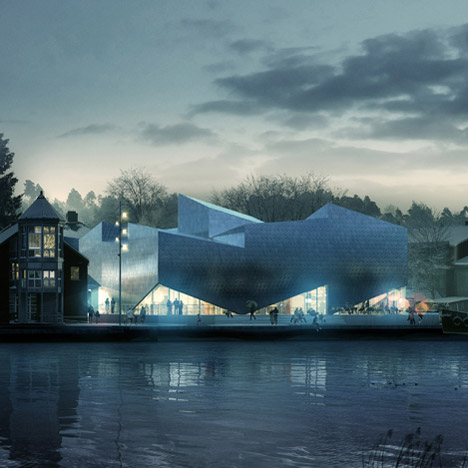
Maritime Museum and Science Centre by COBE and Transform
Construction has begun on an aluminium-clad museum in Norway by Danish architecture studios COBE and Transform.
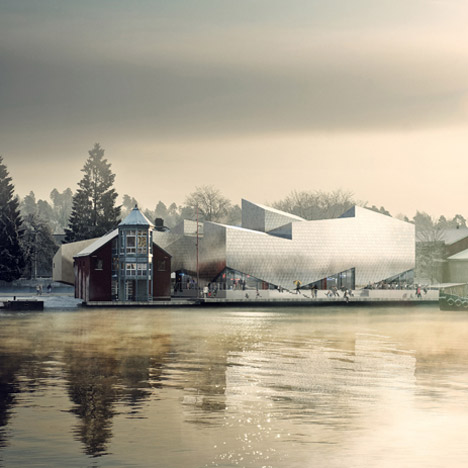
The Maritime Museum and Science Centre will be situated beside the river in the harbour town of Porsgrunn.
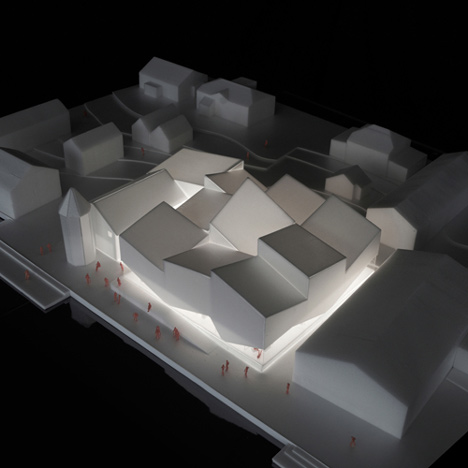
The roof of the two-storey building will be divided into square portions, all pitching in different directions.
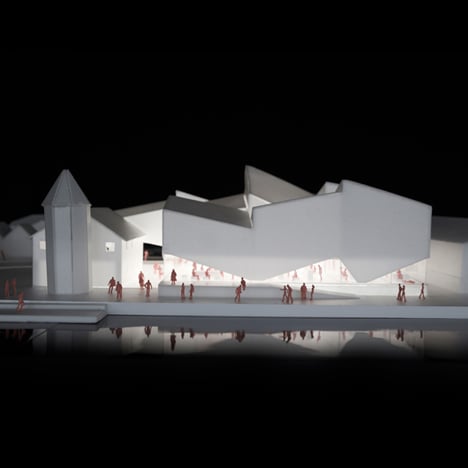
A staircase at the centre of the museum will lead visitors up to a flexible first-floor exhibition hall, where the visible profile of the roof will suggest the location of possible partitions.
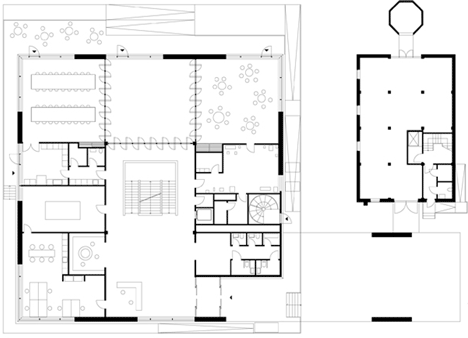
A central entrance hall leading to all other rooms will be located on the ground floor.
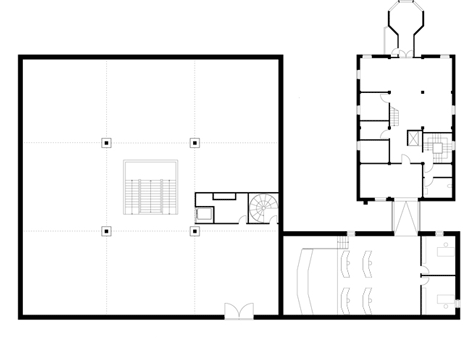
This isn’t the first time the two Danish firms have collaborated – see our earlier story about a competition-winning design for a cultural centre and library in Copenhagen.
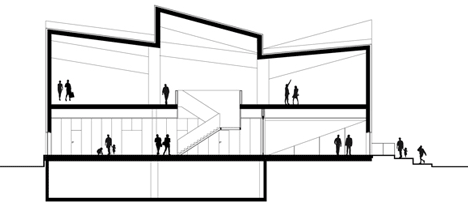
Here's some more information from COBE:
The Danish architecture offices COBE and TRANSFORM start construction of Porsgrunn’s new Maritime Museum and Science Center
Today the construction of the new Maritime Museum and Science Center starts in Porsgrunn in Norway. The building is designed by the Danish architecture offices COBE and TRANSFORM and conveys Norway’s trans- formation from a seafaring nation to a modern society based on knowledge industry. The new Maritime Museum and Science Center is expected to be completed already in autumn 2012.
A new landmark in Porsgrunn
The iconic character of the new Maritime Museum and its attractive location at the river close to the city center makes this new building a natural landmark for the city of Porsgrunn. Furthermore, the new museum building is the first step towards a big new master plan development for Porsgrunn City Center - also designed by COBE and TRANSFORM. The city of Porsgrunn has a long maritime history of shipping and the unique development of the region is clearly visible in the existing remarkable building structure of the area. The concept of the museum shows a high level of sensitivity towards the existing small buildings yet simultaneously stands out as a contemporary public building.
Lars Bendrup, director at TRANSFORM, says: ”The new Maritime Museum and Science Center starts up an important process to turn the back of the city to the front. In the future, the city of Porsgrunn will be oriented towards the river. The signaling effect will therefore be crucial to the city’s new situation”.
9 building volumes with pitched roofs
Taking into account the surrounding building structure, the new building is composed of 9 smaller building volumes with tilted and pitched roofs that are assembled into a larger building unit. A characteristic aluminum façade outlines the shape of the building and provides a vivid impression by reflecting the lights and colors of the surrounding landscape.
All public functions of the building are situated on the ground floor and have direct access to the outdoor areas including the new promenade towards the river. The central entrance area is the building’s main room from where all other rooms are distributed. This multifunctional space is defined by a central characteristic staircase that folds down from above and invites visitors upstairs to the large, enclosed exhibition area. Here various room heights and a distinct ceiling line emphasizes an airy and continuous space. The exhibition space is composed as an open flexible space, gently subdi- vided by the roof into 9 different spatial experiences. The 9 spatialities can be separated or combined thereby providing a sound functional setting for small and large exhibitions.
Dan Stubbergaard, owner of COBE, says: “The new Maritime Museum and Science Center balances between contextual adaptation and modernity.The interpretation of the context’s pitched roofs and small building volumes create the frames for a unique intenior with varying, vivid spatialities.”
The project is done in collaboration with the engineering firm Sweco and is expected to be completed in autumn 2012.